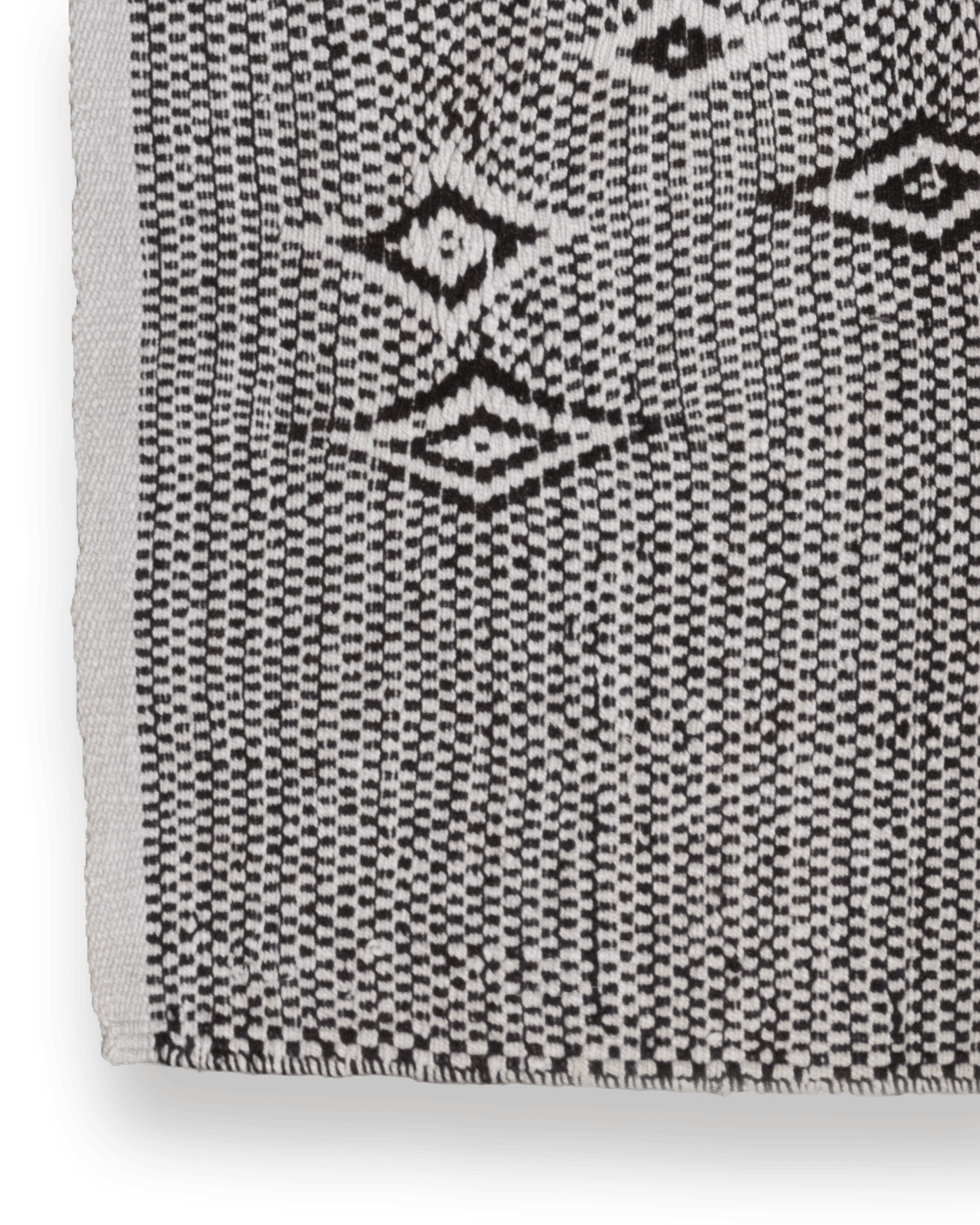History behind the piece
The traditional weavers of the different regions of Peru have always stood out for creating pieces of great expressiveness and exceptional aesthetics, even speaking of those fabrics destined to fulfill simple functions within daily life. It is the case of this type of wide and thick blanket that begins its history being used as a bedspread; in fact, its original name in all the towns in which it was initially made was “frazada camera” (bed blanket), a useful, necessary and highly valued commodity, especially in the highlands.
Despite the fact that blankets with this function have been made from very remote times, it is believed that their production may have taken on greater emphasis and popularity in the mid-twentieth century, and it is only at the end of the same century that this textile acquires functions other than those of its primordial origin, because the beauty of its designs and the variety of its colors are perfectly matched to a decorative use such as hanging tapestry, rug or other ornamental cutting use.
Because the southern area of the Andes has been the owner of a recognized textile production for several centuries generated not only by the old textile manufacturing workshops of the viceregal era called obrajes but by the same processes inherited from pre-Hispanic times, the departments of Cusco and Puno are those who have contributed the most to sustaining the long tradition of making these blankets. The South-Andean blanket made of alpaca wool, but also sheep wool, takes advantage of the beautiful natural tones of native cattle for its pampas (stripes of plain weave in solid color): very rich blacks, extremely varied browns, so many types of maroons, pearly grays and very tender whites.

It should be noted that these traditional blankets are not woven in series. Each one is a different piece, each weaver has expressed in it their preferences for certain colors and motifs despite always following a certain pattern that unifies them. Very few weavers embody the same design or use the same colors again. This, in particular, is a piece from the Mañazo district, one of the areas bordering Lake Titicaca, in the department of Puno, made entirely by hand with sheep's wool, a piece considered an expression of traditional rural art1.
Unlike many hand-made fabrics that are currently being developed on large wooden pedal looms from the colonization era, this traditional piece was made on a simple backstrap loom. It took about a month and a half to create it, just in terms of setting the loom and the careful hand-weaving. It is worth mention that this time does not include the previous processes through which its fibers pass: from the shearing of the wool, the cleaning of impurities, the unraveling of the fleece, the color classification, the first twisting of the fibers to obtain the preliminary thread, the development of the skein to the final spinning, processes that are also carried out by hand.
To start the process, it is necessary to configure the weaving, passing the large balls of thread from one end of the loom to the other according to the chosen colors, a process for which two or more people are needed. Due to the large extension of the weaving, the loom was from the beginning prepared to develop half of the blanket, that is, all the designs and color combinations must be mathematically aligned to fit into the next half, which is practically woven after the first. By starting the weaving, that is, gradually passing the weft thread from left to right, the decoration will be created by color changes across the width of the weaving.

Throughout the process, the weaver must have skills with his hands, concentration and good eyesight to weave the designs, strength and technique to handle the kallwa and a lot of meticulousness and cleanliness to join the halves and finish the piece. A good traditional blanket must also have a uniform, even, very smooth and tight fabric, results of the perfect combination of a good spinning, twisted and woven, that is in terms of the technical part, as the other important element to value one of these blankets is the artistic aspect. The weaver demonstrates his art by harmonizing the shapes and colors of the chosen designs in such a way that there is a balance between the two halves that make up the blanket.
Finally, about this piece it can be said that it preserves the traditional characteristics of shape, decoration, technique and size typical of traditional blankets in the department of Puno. Its fabric, created in a textile pattern known as “Diente de León” (Dandelion), which makes the whole piece look like an immense black and white board, also shows an asymmetric addition of rhomboid iconography.
Origin: Mañazo, Puno
Measurements: 170 cm x 130 cm
Condition: Excellent
SKU: 0236-54
Measurements: 170 cm x 130 cm
Condition: Excellent
SKU: 0236-54
USD
$ 2900.00
$ 2900.00
1Rural Traditional Art is considered to be those plastic manifestations created by rural residents whose productions cannot be identified as part of the autochthonous language of an ethnic group. A traditional artist from the rural area who migrates to the city will continue to make traditional rural art while maintaining their techniques, forms and functions, since these come from the rural area.
ADD THIS PIECE TO YOUR WISH LIST

